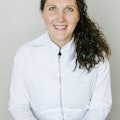Have you ever experienced an instrument tip breaking off while you’re working? It’s a dreadful moment when you pull out your instrument and realize it looks shorter than it did when you placed it into the sulcus. This has happened to me a few times through the years.
In one case of a broken ultrasonic tip, I calmly informed my patient that a small piece of the instrument had fallen off while I was working, and I told them not to swallow for a moment. I quickly sat them up so they could spit it into a cup to retrieve it, but the tip was not there. As they were spitting into the cup, I checked the suction traps to see if it had lodged there, but it hadn’t. I leaned the patient back, did a quick look in the tissues, and used gauze to wipe down everything, but I still did not see it.
More Hygiene Edge videos
Taking x-rays on patients with mandibular tori
A handy trick for flossing a lingual bar
Next, I took a radiograph to see if it was in the sulcus I’d been working in, and luckily, the radiograph revealed that it was still in the sulcus. But was it on the buccal or lingual aspect? I’d been working on a tenacious deposit from both sides. Then I remembered the radiographic buccal object rule. If I moved my tube head forward from my original radiograph, and in a second radiograph the instrument tip moved in the same direction as that forward tube head movement, then the instrument would be in the lingual tissues. If the tip moved opposite from my tube head direction, then it would be in the buccal tissues.
I remembered this by the acronym: same lingual opposite buccal, or SLOB. In this case with the second radiograph, I identified that the instrument tip was in the lingual tissues. I put a 2x2 gauze on the lingual of no. 30 and pushed an interproximal brush slowly through from the buccal to the lingual. I could see the tip emerging from the interproximal space and I used a locking hemostat to grab it before it got lost again. I showed the patient that the tip had been retrieved and documented the procedure thoroughly in my chart notes.
A few takeaways from this experience
1. Have a practice policy on what to do if an instrument breaks. If you can't find the tip, it is recommended that the patient go in for a chest radiograph to make sure it wasn’t aspirated into the lungs. I’ve had to do this before, and it was found in the patient's stomach. We took a follow-up abdominal radiograph to show that the tip had passed through the patient with no problems.
2. Maintain your equipment to prevent patient injury, such as replacing worn instruments so that instrument tips do not break off in a patient's mouth. Some companies make magnetic tip retrievers if your office feels they’re necessary to have on hand.
3. If you have pathology present on a radiograph and you’re trying to determine if it’s on the buccal or lingual, you too can use the buccal object rule to better identify its position. Watch this in action in our Hygiene Edge video.
Hygiene Edge was created by three dental hygiene educators who love both dentistry and education. With over 40 years of experience both in the education space and in the dental field, Melia Lewis, Jessica Atkinson, and Shelley Brown love sharing their knowledge through helpful, short videos online, speaking, and working with amazing companies. You can find more information at Hygiene Edge, on YouTube (www.youtube.com/hygieneedge), and Instagram (@hygieneedge). Have a question or a tricky area? Let us know! We'd love to help.
About the Author

Shelley Brown, MEd, BSDH, RDH
Shelley is a dental educator, speaker, content creator, and mobile clinician dedicated to advancing accessible and innovative dentistry. As co-owner of HYGIENE edgeUCATORS, she empowers dental educators through professional development. Since 2009, she has taught at the Utah College of Dental Hygiene and founded Homebound Smiles, a mobile dental practice serving underserved patients. She also runs Shelley.Dental, a YouTube and TikTok platform focused on patient education and minimally invasive dentistry.